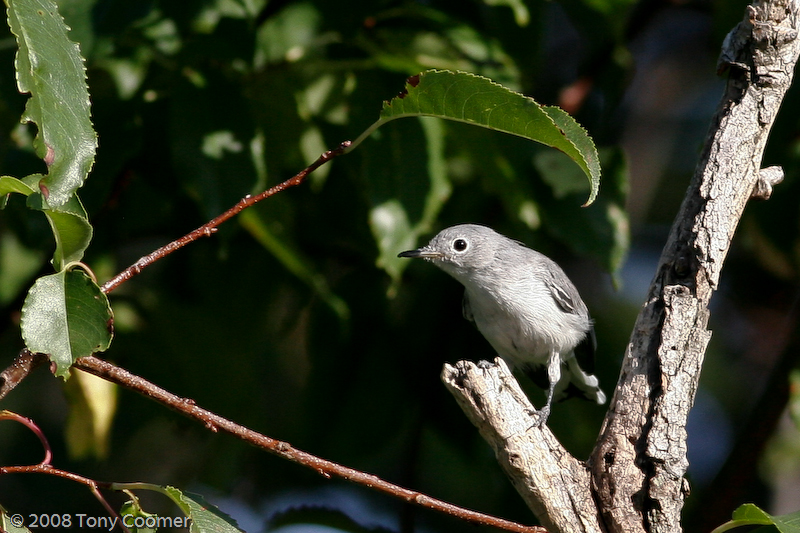|
|
Photos
© Tony Coomer, Occoqouan Bay National Wildlife Refuge, Woodbridge, Virginia |
Blue-gray Gnatcatcher This little bird is much more common in Northern Virginia than you might think. It is probably not as well-known as the Carolina Wren or the Eastern Bluebird because it spends most of its life in the treetops, beyond the view of most people. It is not very colorful, being blue-gray above, with white undersides and a long white-edged black tail. If you get a closer look, you can see the white rings around its eyes. It lives in open woodlands and brushy thickets, where it feeds on insects, moving quickly among the tips of the branches. Nests are also placed out on the ends of tree branches and are difficult to find, unless the parents can be seen feeding the young. The nest is an open cup made of spiderweb or caterpillar silk, bits of tree bark and lichens, and is lined with grass stems, strips of bark, hair, feathers, or other fine fibers from plants or animals. Unlike its relative the Kingbird, the Gnatcatcher does not attack intruders near the nest, still keeping itself out of the public eye. This species breeds east of the Appalachian mountains from New England south, in the MidWest down to the Gulf, in the Southwest from the edge of the Great Plains to California, and as far south as Guatemala and the Caribbean. It migrates to spend winter in the warmer parts of this range - along the Gulf Coast and the border with Mexico, and south to Nicaragua and Cuba.
|
Home | Upcoming Events | About Us | Resource Issues | News | Local Contacts Maps | Photos | Publications | Youth Education | FAQ's | Links | Membership |






